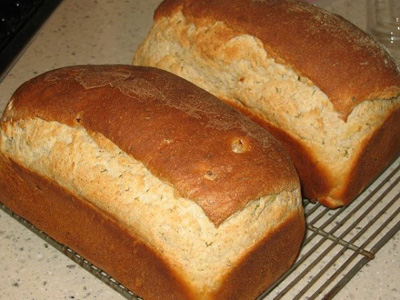
would Artisan Bread in 5 Minutes work for me? if not, what would? *UPDATED with more ingredients*
I'm new to baking-bread-from-scratch but trying to learn...
I just moved to a rural area in China where they don't sell bread. My husband misses it a lot, so I'm trying to learn to make it. However, what I'm reading on here sounds a bit intimidating. I've baked yeast breads in the states, but I had any ingredient I could want and just did step by step recipe instructions, without trouble. Here, I just have the basics.
I asked around on grouprecipes.com's bread group about ideas. I was recommended to check into the Artisan Bread in 5 Minutes' master recipe and Irish Soda Bread (but I don't have cream of tartar here).
From what I've read online, the master recipe (and maybe some others?) would work for me in some ways, but not others. Here's what ingredients and equipment I do and do not have access to:
*UPDATE* - I looked around and found more available ingredients: soy flour, black and purple rice, sesame seeds, millet, sticky rice flour, corn flour and corn meal, lotus root starch, sorghum (milo) and sorghum flour.
INGREDIENTS I DO HAVE:
*white flour
*rolled oats (and a small mill if I need to grind them)
*buckwheat flour
*honey
*soy oil
*yogurt
*applesauce (can make it)
*fruits of all varieties, inc. dried like raisins
*white sugar
*brown sugar
*salt
*cinnamon (can buy the whole bark and use mill to make it ground)
*soy flour
*purple rice
*black rice
*sesame seeds
*(yellow) millet
*sticky rice flour
*corn flour
*corn meal
*lotus root starch
*sorghum (milo)
*sorghum flour
EQUIPMENT I HAVE:
*small countertop oven (with options for turning on both elements, just the top, or just the bottom)
*refrigerator
*electric stovetop
*cookiesheet
*rolling pin
*mixing bowls, spoons, that type of thing
I can get (from a city an hour and a half away):
*baking powder
*baking soda
*packets of dry yeast
I do NOT have & don't have access to:
*whole wheat flour
*bread flour
*shortening
*butter
*margarine
*sour cream
*cream of tartar
*'coarse' or kosher salt - not even sure what this is
*vanilla
*peel
*baking stone
Any ideas? I'm considering buying the book but not if I am lacking something for all the ingredients. General tips about baking without a baking stone, or about alternatives for it, and ingredient subtitutions related to my lists above, and that kind of thing are also appreciated. Thanks!







 bagels
bagels  bagels
bagels 
